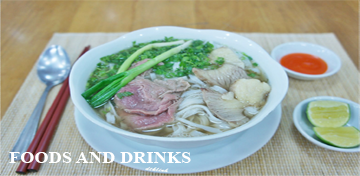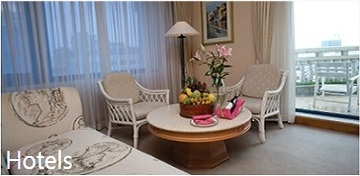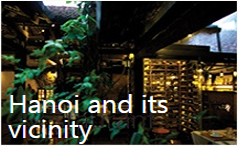History
Vietnam News Agency
a. The struggle against the French under the flag of patriotism
On October 1st, 1888, Hue dynasty official signed an edict to give Hanoi to French colony. Since then, Hanoi was a city under concession regime of France, became the center of politics, military, economy, culture of Tonkin and Indochina Federation.
The headquarters of the colonial government set up their offices here: Tonkin. Residents-Superior , Supreme Court, the Indochina Investigation Department, the Commander of French forces in Indochina.
The French colonization permitted most of large financial capital companies from France to set up their headquarters in Hanoi in order to increase extraction and exploitation of the colonial country while they were also expanding trade with Indochina and European countries such as Indochina bank, the French-China banks, Estate bank, Decuacabo Branch, Poanhsa Vayre, Doniphore, Goda, Phongten alcohol, Omen beer, the Electricity-Water Indochina Company, Tonkin Cotton Fabric Yarn Company ...
Hanoi is also the transport hub of Vietnam and Indochina, including roads, railways, waterways and airways.
Under the impacts of colonialism and semi-feudalism regime and capitalist exploitation methods, there was a great change in Hanoi society. Apart from the peasantry, landowners, feudal class and townspeople, small traders, there gradually appeared new classes in Hanoi, which were the working class, capitalists, intellectual elite, the officials and bourgeois.
In addition to the development of these classes, the culture, science and arts of Hanoi also had new forms. Some universities and colleges, scientific research institutes were established to train the intellectual elite and civil servants served in the French government (French Institute of the Far East, Institute of Microbiology, University of Indochina, School of Medicine, Department of Geology, Department of Geography, Meteorology).
Cultural-art books, newspapers and publications following the new ideology which were published in two languages: Vietnamese, French have become increasingly popular. Hanoi became the cultural center and quickly receive the new wind, new ideas of the era. From the capital of the feudal regime, Dai Viet became the capital of French Indochina. Hanoi is also a concentration place of severe ethnic and class conflicts.
During the last years of the end of 19th century- early 20th century, under the flag of the feudal intellectuals, Hanoians continued to tried to fight against French colonialists in various forms. The riots, assassinations took place right on the street.
In the evening of December 5th, 1898, the insurgent army of Vuong Quoc Chinh contacted Hanoi's generals and prepared a plan to attack the French trade fair which was held in Lien Tri and Nam Ngu villages (now is Vietnam-Soviet Friendship Cultural Palace), but got failure.
Also in that night, the insurgent army led by Mr.Tuan Vong opened fire to attack Ngoc Ha fort (now it is in Ba Dinh). After this match, the French invaders beheaded 50 people and arrested hundreds of people and exiled them in Con Dao.
However, the people of Hanoi were not deterred. On June 27th, 1908, De Tham' insurgent army coordinated with Hanoi local forces to poison French troops which made them nervous.
On April 26th, 1913, Nguyen Van Tuy worker threw hand-grenade and killed two French officers and wounded a number of others in Hanoi hotel in Trang Tien Street. the French invaders became crazy, they terrorized, executed the patriots then displayed their heads in O Cau Den, Cau Giay, Mo Market, Tonkin Free School square; imprisoned the leaders of the insurgent army at Hoa Lo, Con Dao, but people are still indomitable in the fight against the French.
Together with the activities of armed forces, Hanoians participated actively in activities under the reform tendencies of the patriotic elites: the Dong Du movement initiated by Phan Boi Chau, Tonkin Free School Movement initiated by Luong Van Can.
By encouraging the youths to go to Japan to study Japanese civilization and translating books of Khang Huu Vi, Luong Khai Sieu (China), J.Russo, Montesquieu (France), opening school at No. 4 Hang Dao, making presentations before the mass; the elites blew a new flow of ideas – capitalist democracy into different classes, opened new fighting aspect towards patriotic orientation, freedom, democracy in the early 20th century with activities such as requesting the French to amnesty for Phan Boi Chau (1925), holding a memorial service for Phan Chu Trinh (1926) and worshiped in Dong Nhan Temple; a Memorial service for Luong Van Can at the Hop Thiep cemetery (1927) to praise the patriotism against the French; publishing books and newspaper to propagate, educate, encourage people to improve their knowledge, learn the national language, eliminate backward ideology to make a wealthy and strong nation.
The patriotic bourgeois intellectuals who received the capitalist democracy established new organizations such as: Vietnam Nghia Hoa Doan of students of Teacher Training College, Vietnamese Nationalist Party of Nguyen Thai Hoc, Pho Duc Chinh and Nguyen Khac Nhu. In spite of having the limitations, these organizations contributed to the patriotic and democratic movement of Hanoians.
The indomitable spirit of patriotism to fight against the French invaders has been regarded as the red thread throughout the movements against the French of Hanoians. That is the piece of land for Nguyen Ai Quoc leader and members of Vietnamese Revolutionary Youth League to spread the seeds of Marxism-Leninism, bring the fighting movement of workers and Hanoians to proletarian revolution and national liberation.
b. Struggling under the Party's flag and progressing towards the insurrection to seize power (1930-1945)
After years of tramping abroad to search for the way to save the country, Nguyen Ai Quoc found Marxism-Leninism as a " magic handbook". Through this book, he realized that carrying out proletarian revolution is the only right way to save the country and seize power for the people.
He went to Quang Chau (China) to prepare the politics, ideology and organization for the establishment of Communist Party of Vietnam in late 1924. In late 1926, the members of the Vietnamese Revolutionary Youth League who were trained by Ho Chi Minh in Quang Chau came back to Hanoi to spread Marxism-Leninism in late 1926.
The movement of Hanoi workers was growing along with the patriotic and democratic movement of the people in the 20 years of the 20th century.
Under the direct leadership of the provincial and regional committee of Vietnam Youth revolution, Hanoi workers voluntarily fought thanked to acquiring the light of proletarian revolution from the spontaneous struggles against the capitalism such as: L.U.C.I agency's workers (1909), workers of some printing-houses(1919), workers of
The maturity and growth of the worker movement under the flag of Marxism-Leninism, the development of the patriotic movement was seen as the motivation and foundation to promote the establishment of the first Communist Party Branch - Ham Long Branch 5D (March,1929) and then Indochina Communist Party (July 06th,1929), Conference to merge the three communist organizations in the country and finally the foundation of Viet Nam Communist Party ( February 3rd,1930). From now on, the history of the Vietnam turned to a new page: the national liberation struggle under the leadership of the Party.
On March 17th 1930, in 42 Hang Thiec Street, Hanoi Party Committee established Provisional Executive Committee and elected by Do Ngoc Du as the secretary. In June 1930, Hanoi City Party Committee was officially founded and Nguyen Ngoc Vu was selected as the secretary.
Soon after the foundation and under the direct instructions of the Party Committee, Hanoi Party Committee led people to fight against the White terror, support Soviet-Nghe Tinh movement and promote propaganda about voluntary movement and increase the Party's influence on the mass.
In period from 1931 to 1935, a number of party's members and the masses were killed, imprisoned, brutally tortured in the prisons by the enemies. Considering prisons as schools, the communists were determined to continue propagating about the Marxism-Leninism, struggling to return to the Party and the masses, restoring the foundation of the Party as well as the revolutionary movement. On May 3rd 1937, Bac Ky and Hanoi City Party Committees were established again and Mr. Luong Khanh Thien was chosen to be the Secretary.
Applying the Resolution of the 7th Congress of the Comintern (in July 1935) in the specific conditions of our country, Bac Ky Party Committee directly guided Hanoi Party organization to lead people to found the Indochina Democratic Front, to fight against fascism and the war, as well the colonial reactionary; to request freedom, democracy, food, clothing and peace.
They also moved from clandestine performance to semi-public and semi-legitimate ones under multiple forms of organizations: Fellowship, Mutual Association, Sport Association, Farmers' Association ...
The Party has gathered different classes of people regardless of their castes which helped create the most vibrant, powerful fighting front to struggle against the French colonists and their minions.
Along with hundreds of struggles for the life improvement rights, democracy and spread of the national language, the Party widened the struggle through the press front, the Parliament and the meetings to rise the impacts of the Party on the masses, then educated, trained and enlightened them to build political force.
The democratic campaign led by the Party from 1936 to 1939 was considered as the rehearsing and preparation steps of the Party and Hanoians towards the insurrection to seize the power.
In September 1939, World War II broke out. In Indochina, the French eliminated all minimum civil and democracy rights that we had earned in the Democratic Front (1936-1939). In Hanoi, they asked us to dissolve fraternal organizations, constantly beset and imprisoned many party members and the revolutionary masses.
In September 1940, the Japanese fascists attacked Lang Son and French colonists gave them Indochina areas. Since then, the people of Vietnam, especially of Hanoi had to suffer from "a bifocal neck" and were heavily oppressed and exploited by Japanese-French colonists.
To deal with those problems, The 6th and 7th Congress of the Party Central Committee decided to change the strategic direction and identified the prior tasks of Vietnam's revolution that was to liberate the nation, including the preparation of Armed insurrection.
In May 1941, the 8th Party Central Conference which was chaired by leader Nguyen Ai Quoc, defined that the revolution needed to focus on Japanese-French fascists and they decided to establish the League for the Independence of Vietnam (called Viet Minh) to unite all classes for the national liberation struggle.
Following the resolutions of the Party, Hanoi Party was determined to struggle against the terrorists, maintained the leadership agency and Party organization, propagated the letter of leader Nguyen Ai Quoc, "Declaration on programs and regulations "of the Viet Minh Front among the people.
In February 1943, in the new local and world context, the Conference of the Standing Committee of the Central Party which was held in La Vong (Dong Anh, Hanoi) decided to expand the Vietnamese Minh Front, boost all of the activities and prepare for the armed uprising to seize power. The conference also pointed out specific measures for further development of the urban movement, especially the mass mobilization.
After the conference, Hanoi Party focused on mobilizing the masses, establishing the Workers Mobilization Committee to motivate the workers to fight for their important interests. Besides, the Party also placed a special attention to mobilizing and developing the masses. In August 1943, the Central Government allocated the Buoi area (ATK) to Hanoi Party so that they can use it as the standing location and pedal for entering the inner city. Since then, the national organizations of farmers and craftsmen have been quickly developed.
In August 1944, the Party established Youth Mobilization Committee which was also the Interim Executive Committee of National Salvation Youth Union of Hoang Dieu citadel. In late 1944, the Volunteer Propagation Team of Hoang Dieu citadel was established.
Afterwards, the propagandation activities were strengthened considerably. Women's National Salvation also formed some secret teams and groups in high schools and they are the ones who have the revolutionary spirit. Patriotic intellectuals gathered in the Democratic Party organization (in June 1944). In March 1945, patriotic artists who were enlightened by revolutionary organizations, gathered in the "Culture of National Salvation" organization and undertook cultural performances to serve the people under the spirit of "national, scientific and mass".
In a short time, the Party developed and expanded the Vietnamese Minh Front to every class in the society who have patriotic spirit and determination to struggle against Japan-France, irrespective of caste, party, religion. That was considered as a profound political force in which workers, farmers, youth, student in the city were the core. Before March 9th, 1945, the Viet Minh National Salvation Front had about 1,000 members.
Since late 1944, the self defense and armed propaganda teams have also been developed rapidly. the Volunteer Propagation Team of Hoang Dieu became the Volunteer Propaganda Union of Hoang Dieu citadel which 3 teams were equipped with different types of firearms. The working class also had their Volunteer Propagation Team, small Confidential Self defense teams in some factories and enterprises.
On the night of March 9th, 1945, the Japanese staged a coup de main with attacks against French. On 12/3/1945, the Party Central Committee promulgated the Direction "Japan-French were shooting each other and our actions" and initiated the Japan anticlimax movement to save the nation. This was seen as a prerequisite for general insurrection when the time was ripe.
Implementing the Direction of the Party Central Committee, the Party promoted the widespread development of the national salvation organizations in different classes, quickly developed self defense teams and volunteer propaganda teams, coached military forces and called for donations to buy and manufacture rudimentary weapons.
Since mid-March, the movement of people has quickly become the climax. The propaganda activities, meetings, speeches occurred in pulic places such as in Me Tri, Canh market, Lang Pagoda and on the tram routes, in theaters and cinemas. People were supported by volunteer propaganda team to destroy the barns in Bac Ninh province (now, it is Nguyen Huu Huan), Lo Lon, Pha Den, Moc Quan Nhan. The Evil-doers Fighting Team has punished some pro-Japanese oligarchy lackeys in the daylight. Hanoi stood before big storm of the era.
On August 15th, 1945, it was announced that Japan had surrendered unconditionally to the Allies. The Japannese in Indochina felt very confused. This was the time for Vietnam to seize the power. In the night of August, 13th 1945, the National Insurrection Committee ordered to start a general insurrection.
At the night of the 14th , and on August 15th in 1945, the Party Committee decided to lead the uprisings in 10 Northern provinces and immediately found the Hanoi Revolutionary Military Committee. At the night of August 15th, 1945, the Party convened an extraordinary meeting in Ha Pagoda (Dich Vong) to review and discuss about the urgent works for the uprising.
In the morning of June 18th, the Revolutionary Military Committee (Uprising Committee) was established at 101 Gambetta (Tran Hung Dao Street now). In the afternoon of August 17th, the Revolutionary Military Committee converted the meeting held by the Federation of officials associations into marches to glorify the people for supporting Vietnam with the slogan "Support the Viet Minh" "Down with the puppet Government", "Vietnam's independence". In the evening of August 17th, at Mrs.Hai Nha's house, in Dich Vong Tien village, the Party and the Uprising Commitee had an extensive conference and decided to quickly take the opportunity to seize the power.
The conference also made decision on the methods and plan to carry out the uprising in the morning of August 19th. On August 18th, the youth teams put red-ground and yellow-starred flags everywhere, distributed leaflets and posters, called people to revolt on loudspeakers. People quickly sew red-ground and yellow-starred flags, created banners, practiced singing "the Marching Song", "Kill the fascist". In the afternoon of the same day, workers fought directly with the Japanese in front of the General Staff (33 Pham Ngu Lao) and successfully claimed for returning people and weapons. Hanoi had a jubilant and lively night before the insurrection.
In the morning of August 19th, the city was full of bright red of revolution flags. Farmers from the surrounding areas and Hoang Long bravely entered the city. Millions of people flocked to the Opera House. At 11 o'clock, the meeting began. Mr. Nguyen Huy Khoi (Tran Quang Huy) represented for the Uprising Committee delivered the gathering speech of Viet Minh, exhorted people to revolt, established the government of the Democratic Republic of Vietnam.
Then, the huge meeting of nearly 20 thousands of people turned into a powerful demonstration. The self-defense and armed propaganda teams as the core forces of the masses were divided into two large groups to occupy the key locations of enemy's government such as the General headquarter, City Hall, the Treasury, the Post office Department, Hang Trong police Department, Trai Bao Security Affairs.
In the evening of August 19th, Viet Minh completely controlled the city. The uprising of Hanoi won glorious victory. This news was spread throughout the nation and made the Japanese administration and its henchmen dismayed. On August 21st, Hanoi welcomed the return of the Party Central Committee. On August 25th, President Ho Chi Minh went to the city from Phu Gia (Phu Thuong) and stayed at No. 48 Hang Ngang street.
On September 2nd, 1945, tens of thousands of people from Hanoi and other provinces flocked to Ba Dinh Square to attend the Declaration of Independence event. Hanoi became the capital of the Democratic Republic of Vietnam.
More than half of a century of being ruled by the French and Japanese fascist, Hanoians with indomitable patriotism, has constantly struggled against aggressors. Since 1930, under the leadership of the Party, Hanoians have step by step fighted and proceed to the uprising to seize the authority, eliminated slavery, gained freedom and independence towards a new era of construction and combating to protect the capital of the Democratic Republic of Vietnam.




